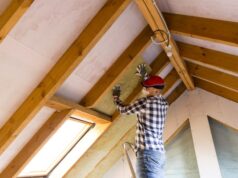
A grass driveway is not merely a lawn that runs from the street to the garage; it’s an area of reinforced grass designed to withstand vehicular traffic. The reinforcement can come from two factors: the species of grass used and/or a system of plastic rings or grids.
Best use
Grass driveways are suitable for low-traffic areas. The plants are susceptible to damage, and once they die, mud (in wet areas) or dust (in dry areas) can become prevalent and problematic. Grass is ideal for use in conjunction with other materials to reduce the amount of hard surfacing and increase the permeability of the soil. For instance, a concrete driveway with a grass strip running down the middle.
Maintenance requirements
Maintaining a grass driveway is similar to caring for a lawn, regular tasks include cutting, watering, and fertilising. Additionally, repairs may be necessary. Tyre tracks should be aerated with a garden fork or similar implement, as compacted soil reduces the air that roots need to breathe. Areas where grass has died should be reseeded, and traffic should be kept off the affected area until the grass is re-established.
Slope considerations
Although grass driveways are porous, they still require at least a 1:100 slope to ensure water that can’t be absorbed immediately drains off. The maximum grade of grass driveways is more limited than most other materials. Grass, even when reinforced with plastic cells, provides little traction for cars and other vehicles. It is advised to keep the slope under 1:4 but preferably less.
Installation methods
Installation depends on various factors. At the most basic level, a grass driveway can simply be seeded like a lawn, but the resulting driveway will be easily damaged. To provide additional reinforcement, plastic cells can be laid on the ground, filled with earth, and then sown with seed. These cells take the weight of the vehicle and protect the grass and, more specifically, its roots. Installation of such cells is straightforward and can typically be handled by most DIYers.
Advantages
- Attractive appearance
- Porous surface, allowing for better water absorption
Disadvantages
- Easily damaged under heavy or frequent use
- Requires ongoing maintenance to keep the grass healthy





